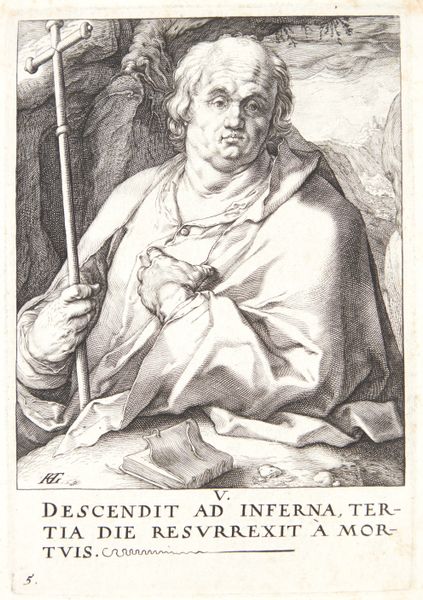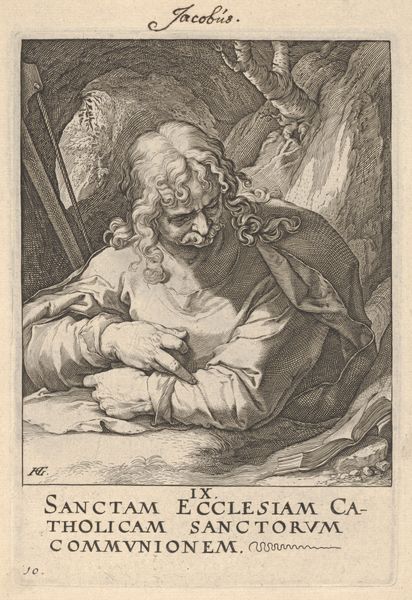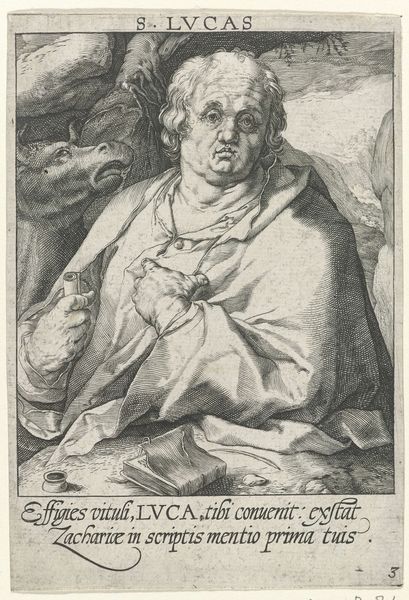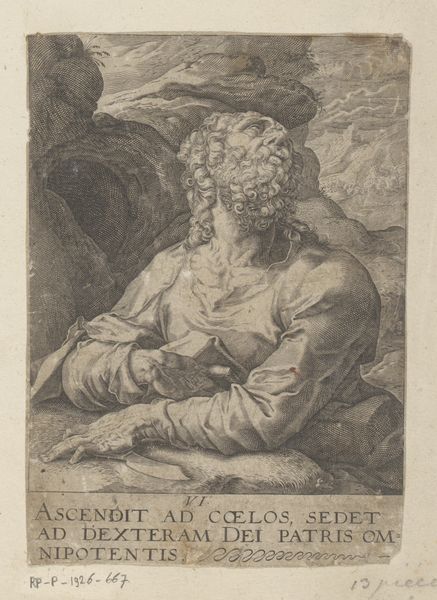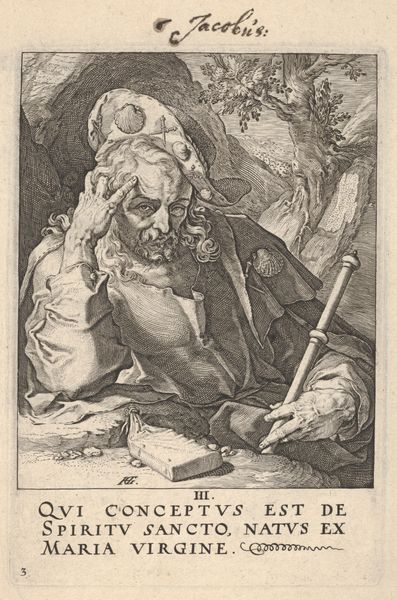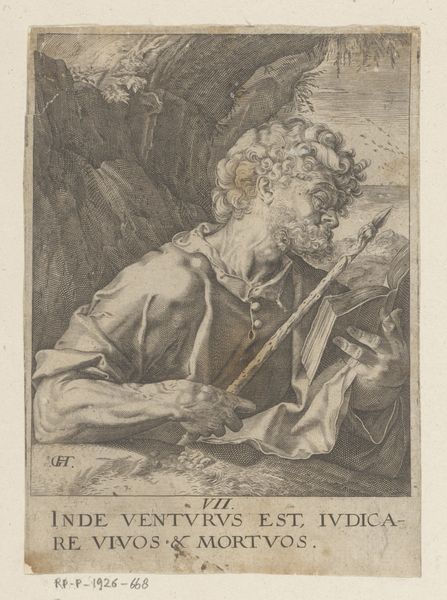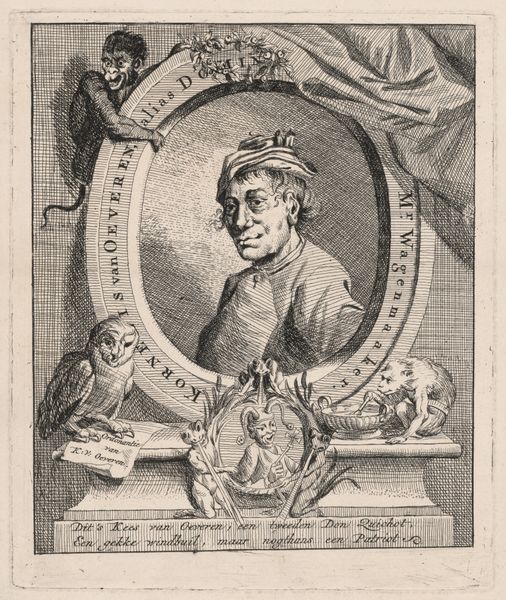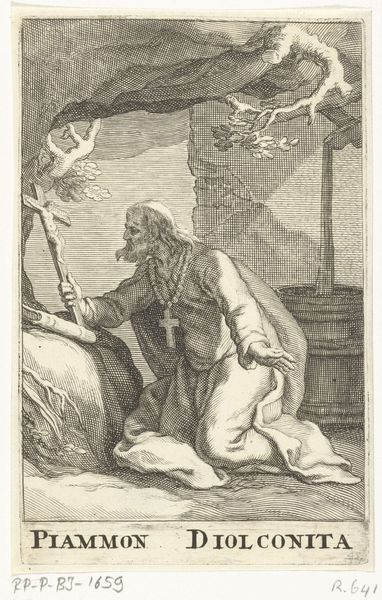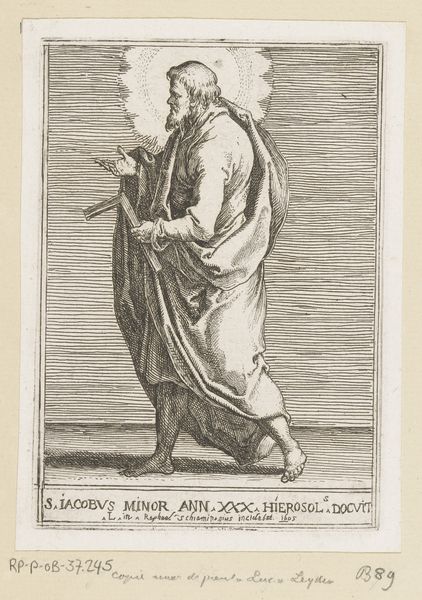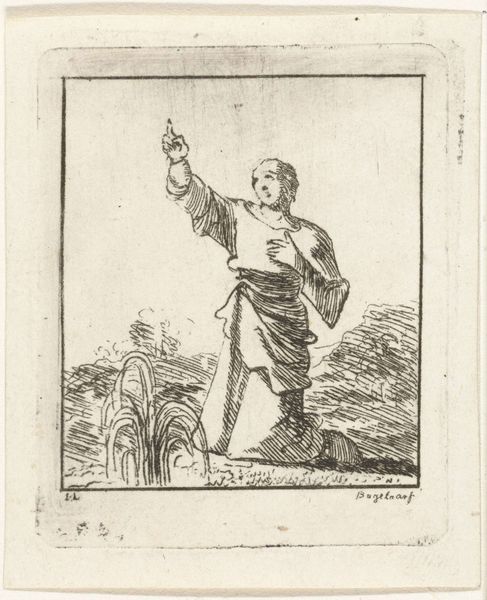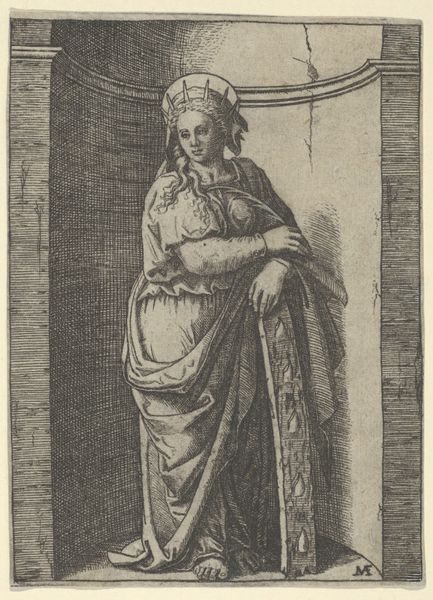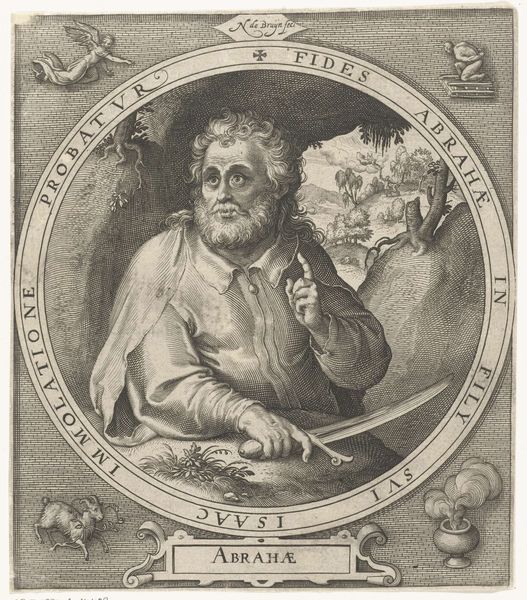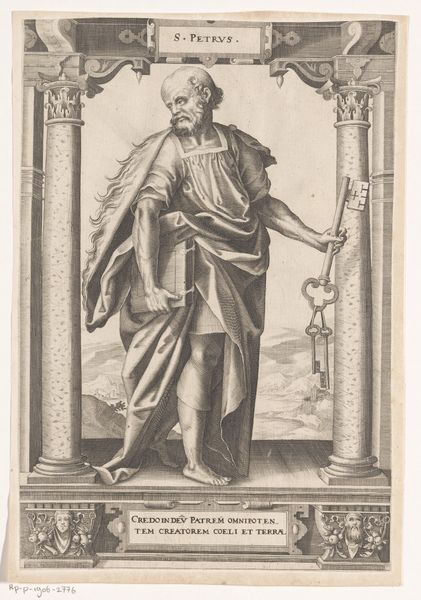
print, engraving
#
portrait
#
baroque
# print
#
figuration
#
cross
#
line
#
engraving
Dimensions: height 149 mm, width 104 mm
Copyright: Rijks Museum: Open Domain
This engraving of the Apostle Phillip was made by Jacques Granthomme around 1630. Look closely, and you’ll see that it is made from a series of tiny, precise lines, a tell-tale sign of the engraving process. Engraving is an intaglio process, where an image is incised into a plate, usually made of copper. The incised lines or grooves hold ink and are transferred to paper under high pressure. The engraver uses a tool called a burin to cut the lines into the metal by hand. It's painstaking work. The depth and thickness of each line determine the tonal variation in the print, from the bright highlight to the darkest shadow. The engraver must also have a firm understanding of perspective and form, to create a convincing illusion of three dimensions. Prints like this were relatively affordable and disseminated images widely. They played a crucial role in spreading new ideas and artistic styles across Europe, a kind of pre-industrial revolution mass media. Considering the labor involved, we can appreciate the skill and dedication required to produce these images, which blur the boundaries between art, craft, and commerce.
Comments
No comments
Be the first to comment and join the conversation on the ultimate creative platform.
